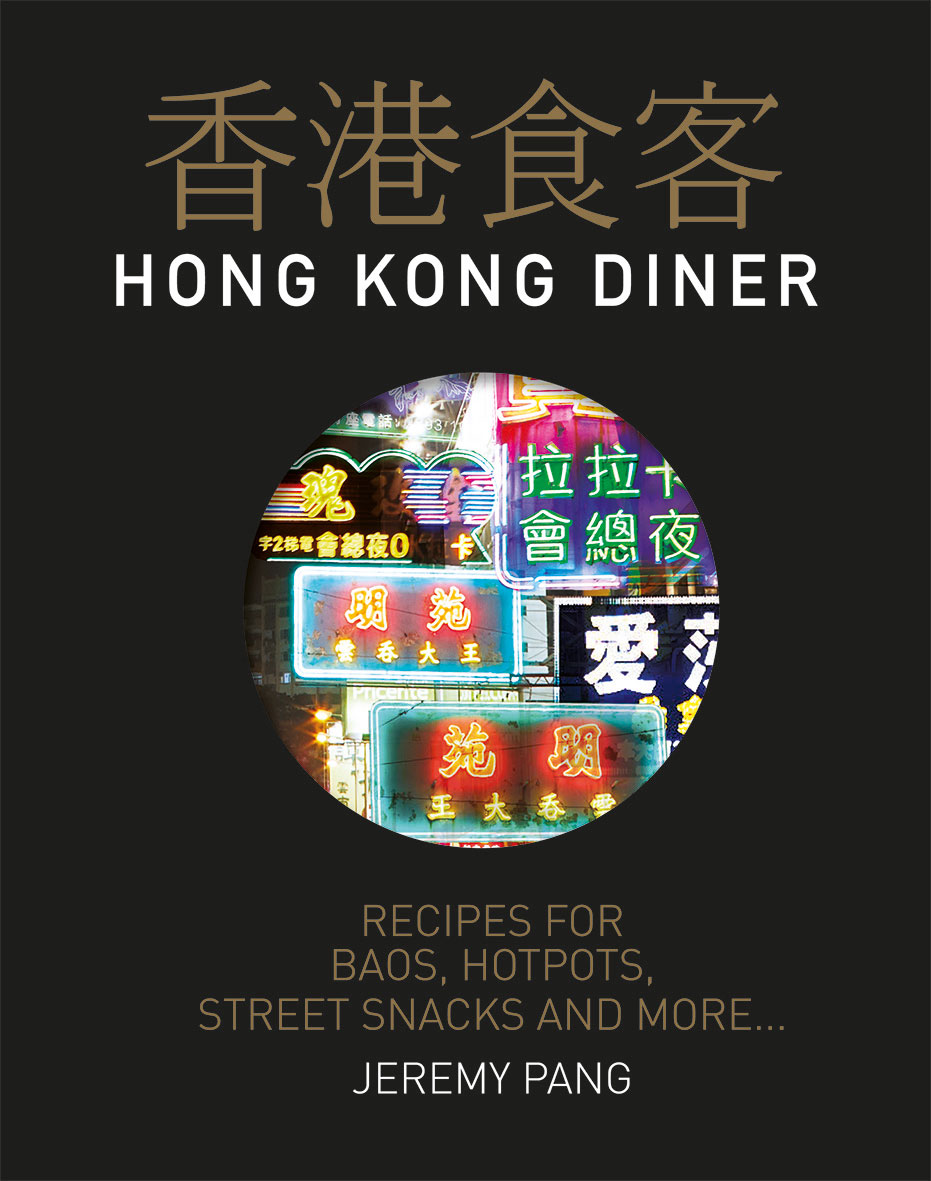Heavenly carbs, oh-so-tender meat and a kick of spice. The Holy Trinity of comfort food
Words Mary-Jane Wiltsher
Photography Kris Kirkham
Back-to-school September heralds changing seasons, fashions… and appetites. Virtuous lunchtime salads have had their moment, and we’re seeking solace from grey skies with chef Jeremy Pang’s east-meets-west cookbook Hong Kong Diner (published 7 September, Quadrille). Crammed with Kris Kirkham’s vivid photography and recipes for pillowy bao, spiced hotpots and grab-and-go streetfood, flipping through the pages quite literally feels like coming out of the cold and into the fragrant steam of a bustling cha chaan teng.
But there’s far more to this book than classic Chinese cooking. Pang – who runs the award-winning School of Wok cookery school in London’s West End – grew up in HK, and is keen to explore the multitude of influences shaping this cosmopolitan city’s ancient cuisine, from west coast America’s fast food to French, Portuguese and British dishes. For every claypot rice there’s a brisket noodle soup – or even a peanut butter French toast. Comfort is the unifying factor, and what better dish to soothe the soul than a soft, carbalicious roll packed with succulent pork and tangy Japanese mayo, accessorised with stuffed chillies? Pang, we salute you.
Pork Chop Crusty Roll
豬扒脆皮包
Hong Kongers love all things pork. Pork offal, porky snacks, roasted pork bao, braised pork, sweet and sour pork… you name it, we can cook it. These fried pork chop buns, with the chop bone kept in to stay true to Hong Kong style eating, will make you salivate throughout the whole cooking process. Whether served in a cheap crusty roll or a soft bap, the crisp outer edges and succulent meat of the pork chop are guaranteed to make your mouth water.

Ingredients
(Serves 2)
2 pork chops, on the bone (approx. 200–250g/7–9oz each)
2 crusty rolls of your choice
vegetable oil, for frying
1 tomato
4 leaves of lettuce – baby gem or iceberg recommended for a good crunch
Japanese mayonnaise (you can find this in many Asian supermarkets)
The Marinade
½ teaspoon sugar
¼ teaspoon salt
¼ teaspoon white pepper
1 clove of garlic
A pinch of five-spice
1 tablespoon Shaoxing rice wine
1 tablespoon light soy sauce
2 tablespoons cornflour (cornstarch)
Method
1. Keeping the meat on the bone, slice into the edges of each pork chop 3 or 4 times, creating slits all the way through that will help keep the meat flat when cooked. Then, turn your knife or cleaver upside down and, using the blunt end, bash the meat as many times as possible to flatten it out, making tracks along the pork. This will begin to tenderize the chop and allow the marinade to soak into the meat well.
2. Once flattened, a similar thickness to an escalope, mix the marinade ingredients together and massage into the chops until they are completely coated. Leave in the fridge, ideally overnight, and for a minimum of 1 hour, to marinate.
3. Slice the crusty rolls in half, ready for the fried pork chops. Cut the tomato into thin slices, and make sure your lettuce is washed and patted dry so it maintains its crunch.
4. Traditionally in Hong Kong, the chops are deep-fried to order. Half-fill a wok or deep-fryer with vegetable oil and heat to 180°C (350°F), or use a wooden skewer or wooden chopstick to test by placing the tip in the oil: if the wood starts to fizz after a second or so, the oil is hot enough.
5. Deep-fry the chops for 5 minutes (turning once), until golden brown, then place on a few sheets of kitchen paper to drain off any excess oil.
6. Alternatively, you can also shallow-fry the chops. Pour roughly 5mm (¼ inch) of oil into a large frying pan, bring to a medium-high heat, then place the chops in the frying pan one by one. Fry for 2–3 minutes on each side, until golden brown all over, then place on a few sheets of kitchen paper to drain off any excess oil.
7. Once the chops are done, put them directly into the crusty rolls, followed by a couple of slices of tomato and some lettuce. Squeeze a dollop of Japanese mayonnaise over the top, put the crusty top on the roll, and serve.
Stuffed Chillies & Aubergine Sticks
釀辣椒茄子串
This snack will transport you straight to the streets of Mong Kok. It is typically consumed in quick succession with several other street food dishes, all while walking along the busy street markets, where the neon lights are guaranteed to keep you awake no matter how full you are or what time of day it is. When made at home, this type of snack splits the difference between healthy and indulgent, and makes great party food too.

Ingredients
(serves 4)
10 large fresh green chillies
2 Chinese aubergines (eggplants)
50g cornflour (cornstarch)
Vegetable oil, for frying
The Condiments
1 tablespoon sweet soy sauce (kecap manis)
3 tablespoons hoisin sauce
3 tablespoons sriracha chilli sauce
The Filling
½ a spring onion (scallion)
100g (3½oz/¾ cup) raw, peeled and deveined prawns (shrimp)
100g (3½oz) skinless cod fillet
(swapsies: or any white fish fillet)
100g (3½oz) cleaned squid tubes
¼ teaspoon salt
A pinch of white pepper
1 teaspoon pure sesame oil
1 tablespoon cornflour (cornstarch)
Method
1. Slice the green chillies in half and remove the seeds, keeping the chilli halves intact.
2. Slice the aubergines (eggplants) into 3–4cm (1¼–1½ inch) rounds, then carefully scoop out most of the centre of the aubergine pieces, cutting a rough cone shape while leaving a thin layer of flesh still at the base to keep the filling from leaking out, creating aubergine ‘shot glasses’ that can be filled with the mix. Spooning out half the aubergine flesh will allow space for the fish filling.
3. Finely chop the spring onion (scallion) and set aside.
4. Put the rest of the filling ingredients into a food processor and blitz on a high speed, until a smooth paste has formed. Open the processor and run a fork through the mix, to check for any large lumps of seafood or fish. Blitz once more for good measure, until completely smooth.
5. Once smooth, add the chopped spring onion to the mix and fold in with a spatula or spoon.
6. Lightly dust the inside of the chillies and aubergines with cornflour (cornstarch). Then spoon in the filling until it is flush to the edge of the vegetables.
7. Traditionally, these snacks are deep-fried; however, for home cooking, shallow-frying the stuffed veg will make them just as tasty and less oily. Fill a large frying pan with enough oil to shallow-fry the vegetables (roughly 5mm/¼ inch). Bring the oil to a medium heat and wait until you can feel the heat by holding your hand 5cm (2 inches) above it.
8. Carefully lay the stuffed vegetables in the pan, fish side down, and fry for 4–5 minutes, until the fish mix is golden brown. Use a large spoon to baste each piece well with the hot oil. Once the fish mix has turned a golden brown, turn over and continue to fry the vegetables for a further 3–4 minutes, then add 4 tablespoons of hot water, cover the pan with a lid, and cook for a further 4–5 minutes.
9. Once the vegetables are piping hot all the way through, remove the lid and allow to fry for a further 30 seconds.
10. Place the vegetables on a couple of sheets of kitchen paper to drain any excess oil.
11. Serve hot, with a good squeeze of sweet soy sauce drizzled over the top and some hoisin and chilli sauce on the side.

Hong Kong Diner
by Jeremy Pang (Quadrille, £15) is published 7 September
